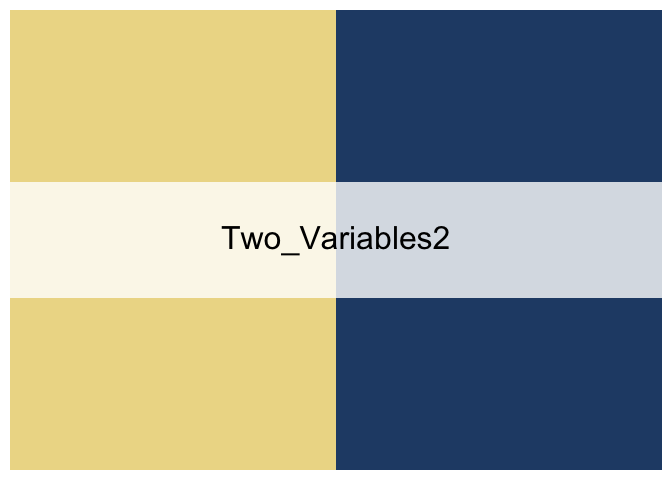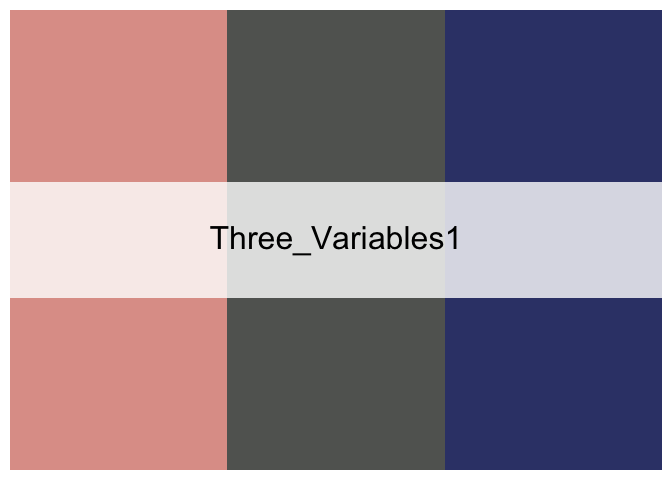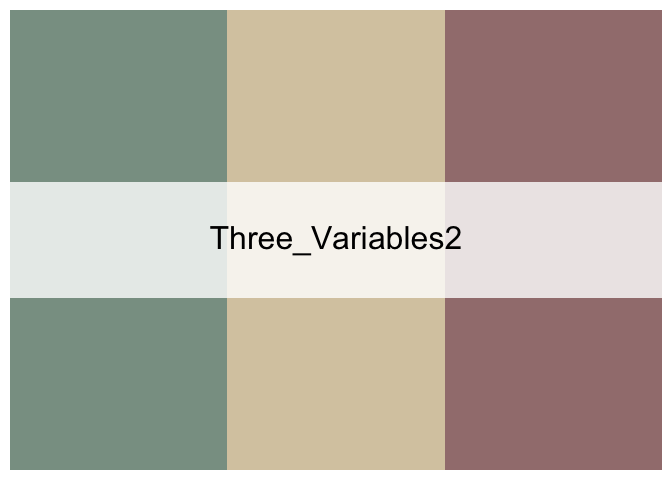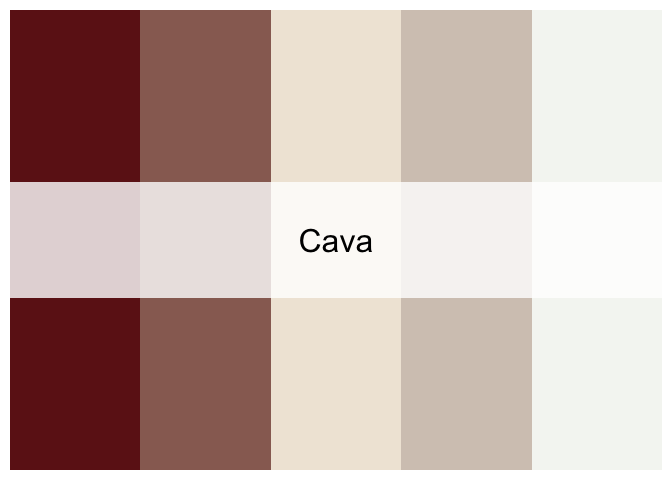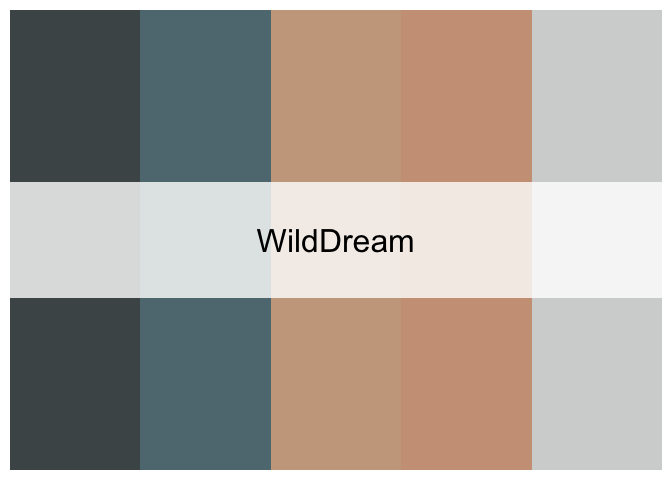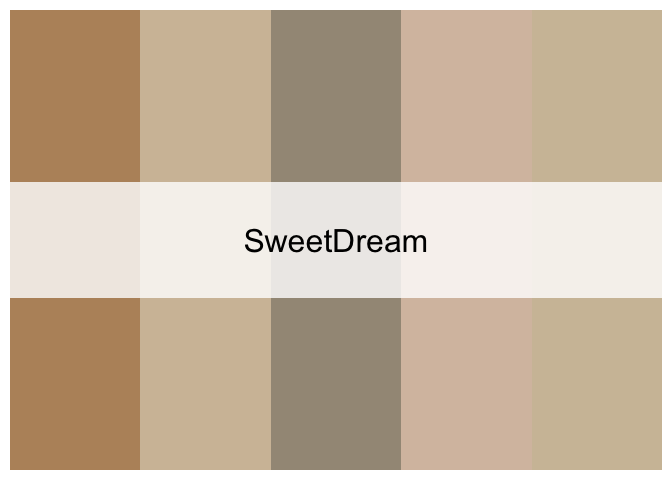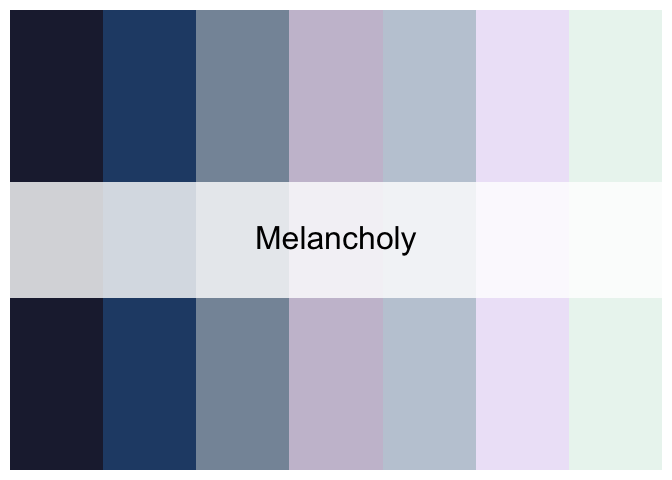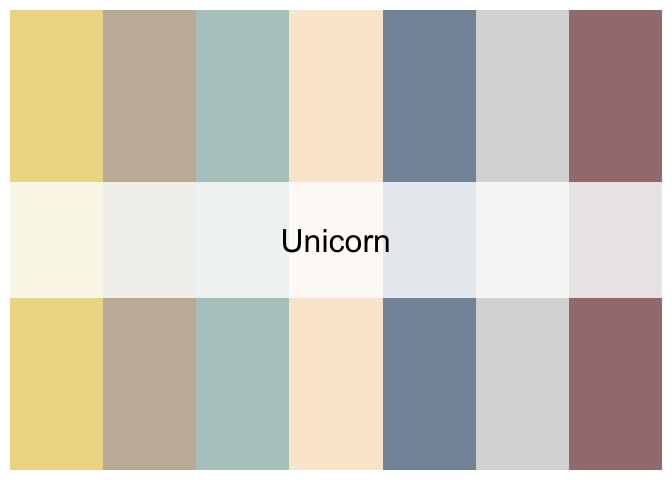moRandi is a R package for Morandi color palette, Morandi colors refer to a muted and pale color palette, which is not bright as if covered with a layer of gray tone. Morandi colors has rich connotation without a tendency to show off, releasing the soothing elegance.
Giorgio Morandi (1890-1964) was an Italian painter and printmaker who specialized in still life. His paintings are noted for their tonal subtlety in depicting apparently simple subjects, which were limited mainly to vases, bottles, bowls, flowers and landscapes.
Morandi Palette Reference: morandi_color_palette.
Codes are deeply inspired by wesanderson.
Any contributions or improvements are very welcome.
library(devtools)
devtools::install_github("narcisoyu/moRandi")library(moRandi)
morandi_show()#> [1] "Showing all the morandi colors"
Choose the color(s) that you like!
NOTE: a numeric vector (in the following example, the x is required, and the numbers are the colors you liked from the pie palette)
x <- c(6, 8, 13, 15, 28, 56)
my_morandi_colors <- morandi_diy(my_colors = x)
my_morandi_colorslibrary(moRandi)
#For two variables plot
morandi("Two_Variables1")morandi("Two_Variables2")#For three variables plot
morandi("Three_Variables1")morandi("Three_Variables2")#Other options
morandi("Cava")morandi("WildDream")morandi("SweetDream")morandi("MistyForest")morandi("Melancholy")morandi("Unicorn")library("ggplot2")
ggplot(mtcars, aes(factor(cyl), fill=factor(vs))) + geom_bar() +
scale_fill_manual(values = morandi("Two_Variables2"))morandi_heatmap_palette <- morandi("Melancholy", 100, type = "continuous")
## make some dummy data
set.seed(123)
data <- matrix(rnorm(100, 0, 10), nrow = 10, ncol = 10)
colnames(data) <- paste0("col", 1:10)
rownames(data) <- paste0("row", 1:10)
## apply morandi palette
heatmap(data, col = morandi_heatmap_palette)


